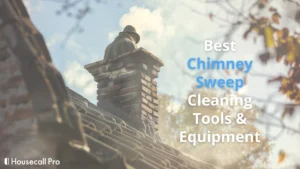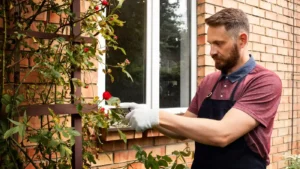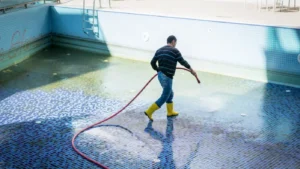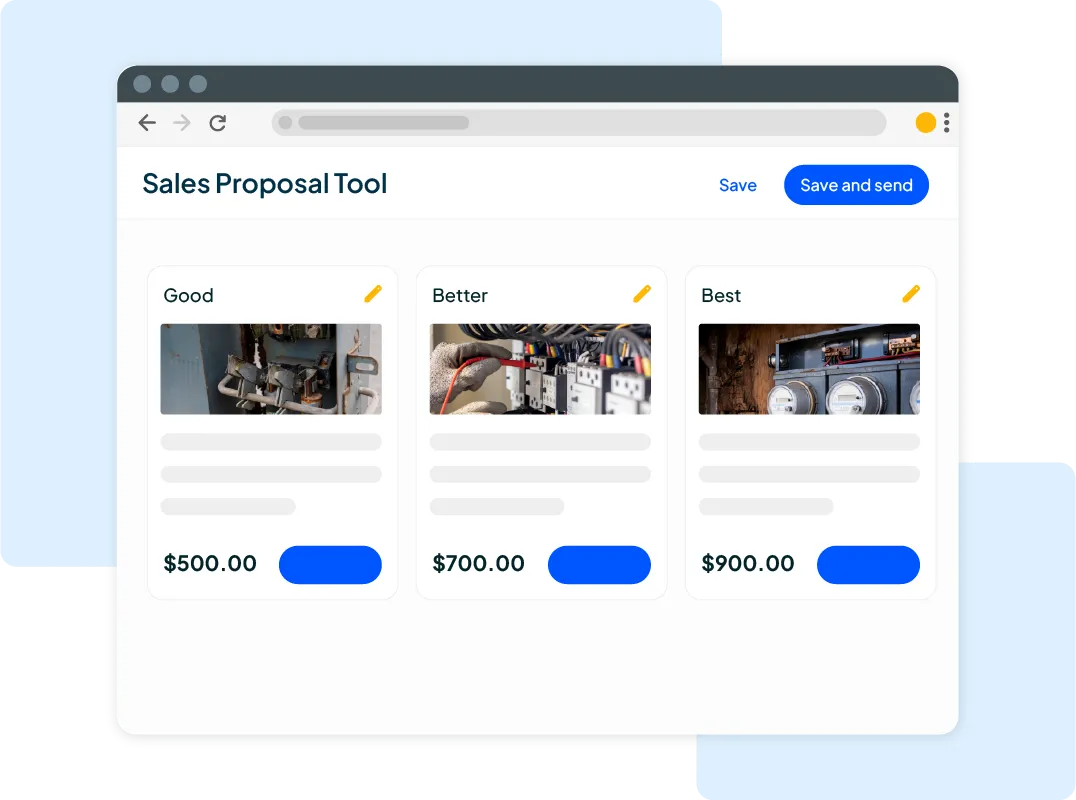Want to win more jobs with less effort?
Grow your business and send quick quotes with our home service software.

Want to see your potential revenue?
See what businesses like yours earn with Housecall Pro in 1 - 2 minutes.
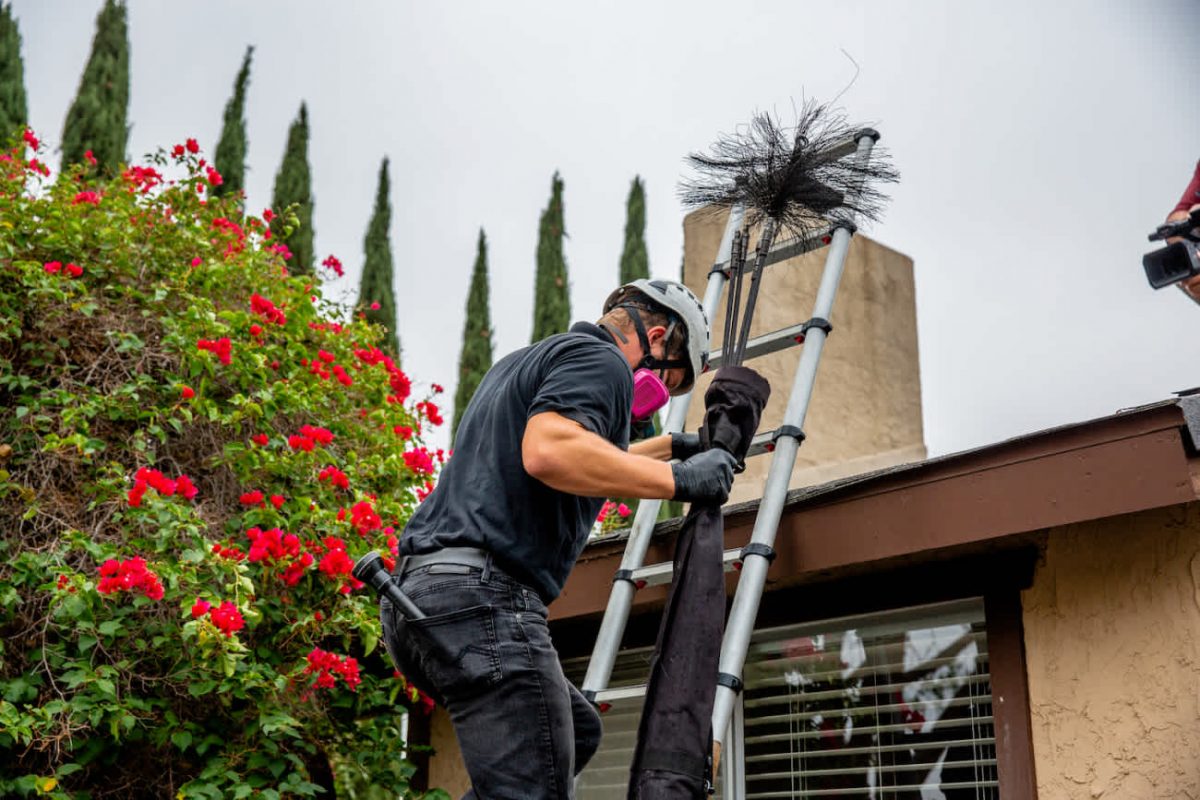
Chimney cleaning or sweeping is a tricky job, requiring a high level of dexterity, physical strength, and more than just a basic knowledge of safety. If you own a chimney sweep business, it’s important to set a fair price that justifies the amount of work the job demands.
Set too high a price, and you might risk losing customers; set it too low, and you may struggle to break even. You’ll need to decide on a strategic pricing structure to rise above your competitors and keep your business profitable.
That’s why many chimney cleaning businesses face common challenges while deciding on pricing. For example, they may struggle to adopt a consistent price point as the seasons change and job demands shift. Prices can also vary depending on where your business operates and the cost of living in that area. Another dynamic factor in pricing is the scope of work, which may vary across jobs. Catering to each of these factors is crucial yet challenging. So, how do you go about determining chimney cleaning costs?
Don’t worry, we got you.
In this blog post, you’ll learn:
- The factors to consider while pricing chimney sweep costs
- Pricing charts for various average cost ranges
- Step-by-step instructions to help you calculate costs
How to Price Your Chimney Cleaning Services
Step-by-Step Guide to Pricing Chimney Sweep Jobs
To accurately assess the cost of chimney services, it’s essential to follow a structured approach that ensures profitability while remaining competitive.
1. Calculate Your Labor Costs With Precision
Start by using this simple formula to calculate labor costs accurately:
Labor Cost = (Hourly Wage × Total Hours Worked) + Travel Time Cost
- Hourly Wage: Determine your team’s hourly pay rate based on their experience, certifications, and local market standards
- Total Hours Worked: Track your team’s total hours spent on jobs, from initial inspection to final cleaning or repairs.
- Travel Time Cost: Calculate the hourly compensation based on your team’s estimated commute time to and from the job site—factor in miscellaneous costs like fuel expenses.
Example:
Hourly Wage = $30
Total Hours Worked = 2 hours
Travel Time = 1 hour
Labor Cost = ($30 × 2) + ($30 × 1) = $90
Estimate labor costs: Easily calculate your labor cost by using Housecall Pro’s labor cost calculator
2. Account for Material Costs
The cost of cleaning materials is a major part of any chimney sweep job. You can calculate it with the following formula:
Material Cost = Total Cost of Materials ÷ Number of Jobs Per Material Batch
Break down the material costs into:
- Consumables such as cleaning agents, HEPA filters/bags, and lubricants
- Reusable tools such as chimney brushes, inspection mirrors, and respirators/masks
Next, divide the bulk material costs by the number of jobs they’ll be used for.
Example:
Brushes = $100 (used for 20 jobs)
Protective Gear = $50 (used for 10 jobs)
Cleaning Agents = $25 (used for 5 jobs)
Material Cost Per Job = ($100 ÷ 20) + ($50 ÷ 10) + ($25 ÷ 5) = $5 + $5 + $5 = $15
3. Include Overhead Expenses
Overhead expenses include miscellaneous and ongoing expenses that keep business operations running, such as fuel, marketing, insurance, and equipment maintenance. Be sure to include them in your pricing with this method:
Overhead Per Job = Total Monthly Overhead ÷ Expected Number of Jobs Per Month
First, calculate the total monthly overhead, including all fixed and variable monthly expenses.
Next, estimate the number of monthly jobs you expect to complete using historical data or projected bookings.
Example:
Monthly Overhead = $1,200
Expected Jobs = 30
Overhead Per Job = $1,200 ÷ 30 = $40
4. Add Your Desired Profit Margin
Adding a profit margin ensures your chimney sweep business remains sustainable and profitable. Here’s how to determine your profit margin:
Profit Margin = Total Cost × Desired Profit Percentage
Final Price = Total Cost + Profit Margin
Chimney sweeps typically earn 20-30% profit margins. You can use the average of this range as a starting point and then alter it based on market response.
Maximize Profitability: Whether a simple chimney inspection or a complex repair, Housecall Pro’s Service Pricing Calculator helps chimney businesses confidently set competitive prices while maximizing their revenue and efficiency.
5. Adjust for Market Conditions
Pricing without market context or surveying your competition is a gamble that could hurt your pricing strategy. It’s best to adopt pricing that reflects regional demand and competition. Here’s how to do that:
- Research the pricing of existing players in the market who offer similar services. Use business directory websites like Angi or HomeAdvisor for accurate pricing insights.
- Adjust your pricing according to the season. Certain seasons, such as fall and winter, are peak periods, allowing you to increase your pricing to meet demands.
- During quieter seasons, you can consider offering discounts or package deals to your clients. You can also offer promotional deals like free inspections to stay competitive and attract new clients.
Example:
- Competitor Average: $180
- Your Calculated Price: $181.25
To stay competitive, you might round your price to $180 or offer additional value, such as a free inspection. Now let’s take a look at some average chimney sweep prices so you can get an idea of how much to charge.
Average Chimney Sweep Price By Chimney Type
| Chimney Type | Average Cleaning Cost |
|---|---|
| Masonry (Brick/Stone) | $150 – $375 |
| Metal/Prefabricated | $90 – $175 |
| Gas Fireplace | $80 – $150 |
| Wood Burning Fireplace | $150 – $250 |
| Wood Stove | $130 – $300 |
| Pellet Stove | $130 – $300 |
Average Prices for Chimney Cleaning By Service Type
| Service Type | Description | Average Price Range |
|---|---|---|
| Level 1 Standard Chimney Inspection | Basic inspection,Visual inspection of internal and external components of the venting system. No specialized tools required | $150–$375 |
| Chimney Cleaning | Routine cleaning. Soot and ash removal. Removal of light creosote buildup | $125–$250 |
| Level 2 Inspection | Detailed inspection. Use of camera and other specialized tools for inspection. Typically done during property sales or after an accident | $250–$600 |
| Creosote Removal | Specialized cleaning. Targets removal of heavy creosote buildup to prevent fires | $200–$400 |
| Chimney Cap Installation | Installation of a cap to prevent external elements such as debris, water, and small animals from entering the chimney | $100–$200 |
| Chimney Liner Inspection | Inspection of the chimney liner for: CracksLeaksOther damage | $175–$400 |
| Smoke Chamber Repair | Repairs to the smoke chamber to: Improve draft. Prevent structural issues | $300–$700 |
| Chimney Waterproofing | Entails the application of a sealant. Protects chimney exterior from water damage | $200–$500 |
| Chimney Relining | Installation of a new liner to improve the safety and efficiency of the chimney | $1,200–$4,600 |
| Masonry Repair | Aims to repair brick or stonework. Includes tuckpointing and fixing cracks | $500–$2,500 |
| Level 3 Inspection | All-round, detailed inspection. Typically requires partial disassemblyInspects hidden areas and structural issues | $1000–$5,000 |
https://www.angi.com/articles/how-much-does-chimney-sweep-cost.htm
https://homeguide.com/costs/chimney-sweep-cost
Chimney Sweep Pricing Factors to Consider
These are average costs compiled from different sources. Pricing will vary depending on many factors like location, type of chimney and so forth. it’s important to conduct market research and see what your competitors are doing to stay up to current pricing trends. Here are some crucial factors to consider when estimating the cost of chimney cleaning:
1. Type of Chimney and Cleaning Required
The type of chimney you’re cleaning affects the price you need to quote. For example, brick and stone chimneys are harder to clean due to their porous nature, which traps soot and creosote more easily.
They also feature a more complex design, making it difficult to clean debris and buildup. Such jobs may require special cleaning tools and more expertise, which raises the cost.
The type of fireplace in a chimney also makes a huge difference. For example, gas-burning fireplaces accumulate less soot and require less effort to clean. The average pricing structure for cleaning gas-burning fireplaces ranges from $80 to $130.
Pellet stoves, wood-burning fireplaces, or freestanding wood stoves require more maintenance. For instance, pellet stoves produce fine ash that can clog vents and fans, commanding more than just a surface-level cleaning. The average cost for a chimney sweep for these types of fireplaces can start at $150.
The amount of upkeep required for a chimney also influences its pricing. Routine annual cleaning, for example, only takes a couple of hours. It entails less effort and basic tools to remove minor soot and ash buildup.
If there’s a request for deep cleaning, it is a more intensive cleaning job where your crew may need to handle heavily used or long-neglected chimneys using special equipment. As a result, it makes sense to adopt a tiered pricing strategy that clearly outlines the costs for routine vs. intense cleaning jobs.
2. Chimney Sweep Inspection Costs
The National Fire Protection Association (NFPA) determines three levels of chimney inspections. In most cases, both inspection and cleaning are carried out simultaneously. Here’s how to differentiate between the three levels:
- Level 1: This includes a basic check for safety issues and buildup. It is typically paired with cleaning services but can also be offered without them at a lower price.
- Level 2: This level of inspection involves more scrutiny, involving the use of video scanning to examine surfaces and other chimney components closely. You can bundle it with cleaning and repairs.
- Level 3: This level of inspection is the most extensive, often requiring disassembly if you detect major issues with the inner chimney walls or components. This type of inspection is rarely bundled with any other service due to its complex nature.
3. Accessibility Challenges
Cleaning chimneys is a tall order, quite literally. Some chimneys are difficult to access due to their height, original construction, placement, or roof condition. The more difficult it is to clean a chimney, the more you may charge for the time, effort, skills, and equipment the task demands.
For example, a roof with a 40-degree pitch, which exceeds the standard chimney height, calls for roof harnesses and intensive labor. The job is also riskier, giving you room to adjust your average cost of chimney cleaning accordingly.
Similarly, a chimney roof with loose shingles or placed near an obstruction (tree branches or power lines) poses a hazard to your team, requiring careful navigation and skills. In such cases, you’ll need to adjust your pricing for special labor and equipment costs, along with the total job duration.
4. Frequency of Cleaning
The Chimney Safety Institute of America (CSIA) recommends cleaning chimneys more than once a year for safety. However, some people may opt for a one-time cleaning, leaving your team to deal with long overdue gunk, hardened debris, and a more thorough cleaning in general.
Such past-their-prime chimneys take longer to clean and drive up labor costs, requiring you to adjust your final price quote accordingly. Remember, such requests may also come in during peak seasons, allowing you to justify higher prices easily.
For clients who depend on you for regular chimney sweeps, you can offer them goodwill discounts or packaged deals that promise a fixed number of cleanings per year for a flat rate.
Get In Touch: 858-842-5746
Let us earn your trust
On average, Pros increase monthly revenue generated through Housecall Pro by more than 35% after their first year.
See plan options and feature breakdown on our pricing page.
5. Location and Travel Costs
Well-connected towns with seamless modes of transport can help you zip quickly from one job to the next without incurring additional travel fees. But what if you operate in areas with varying distances between clients?
Such areas call for longer travel distances, raising fuel and vehicle repair costs, thus reducing your profit margin. Longer distances can also reduce the number of jobs you can schedule and complete in a day, limiting your earning potential. Ensure you factor in such travel variables while pricing your chimney cleaning services.
Here are some tips to manage travel costs:
- Group Jobs: Save up on travel costs by scheduling multiple jobs in the same vicinity on a given day. Use reliable scheduling software to help you track and schedule jobs within a certain area.
- Mileage Fees: Consider charging a per-mile charge for service requests outside a predetermined service radius. For example, you can charge $1.50 per mile for any request from an area beyond 20 miles.
- Service Zones: Clarify and define the areas you serve and set clear prices for these zones to account for distance.
- Account for Traffic: In urban areas, factor in traffic delays while calculating labor and travel costs
- Public Transit: If you operate in well-connected cities, consider using public transportation to save fuel costs. Alternatively, you can use smaller vehicles (motorbikes/compact service vans) to reduce parking expenses and get through traffic quickly.
6. Add-On Services
Many chimney sweep businesses earn a portion of their profit by upselling their services. Think of creative ways to propose add-on services to provide value. For example, consider recommending repair and maintenance services as part of annual visit packages.
Some common upsells are:
- Chimney flashing repairs
- Chimney liner installation
- Fireplace damper replacement
- Chimney cap replacement
- Creosote removal
- Smoke chamber repair
How to Charge and Get Paid for Chimney Sweep Services
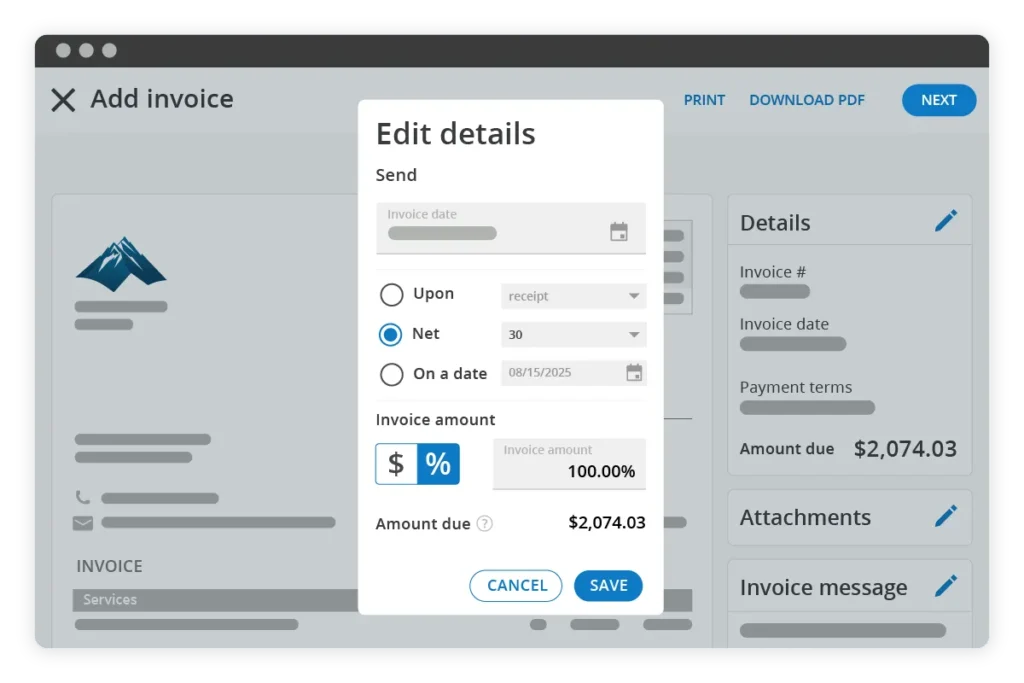
The hard part’s over once you set a price for your services. The next step is charging for your services and getting paid for all your hard work. Here’s how to make this process smoother:
Create Clear, Professional Quotes
Professionally crafted quotes that reflect clear pricing and a list of services build trust with your clients. Luckily, you can rely on chimney sweep business software like Housecall Pro to accomplish this task.
Housecall Pro can help you create itemized estimates that outline costs upfront, promoting a transparent relationship with your client. You can use it to detail any additional charges so clients understand where exactly their money is going. To avoid conflicts later, you can also include any terms and conditions in the quote, such as the scope of work, payment terms, and timeline.
Collect Deposits Before Starting
Appointments can be withdrawn, postponed, or broken, resulting in lost business and empty slots that eat into your revenue. Secure your business by requesting a deposit through payment scheduling with Housecall Pro. By automating payments, you can collect your deposits quickly and securely in case of canceled appointments.
Offer Flexible Payment Options
Get paid on time by making it easy for clients to pay you. Offering flexible payment options is a great way to encourage clients to pay invoices quickly. Ensure your payment options include popular cashless modes such as credit cards, ACH transfers, mobile payments, and online links. For regular clients, you can set up a recurring billing system using Housecall Pro’s invoicing software to streamline payments for both parties.
Collect Payments On-Site or Online
More than 70% of businesses say that late payments hurt their revenue. Don’t be a part of this statistic. Instead, set up systems that allow you to collect payment right after a job, ensuring a steady cash flow. Use mobile card readers from Housecall Pro for immediate payment after the job or send secure payment links via text or email.
Price Smart, Earn More
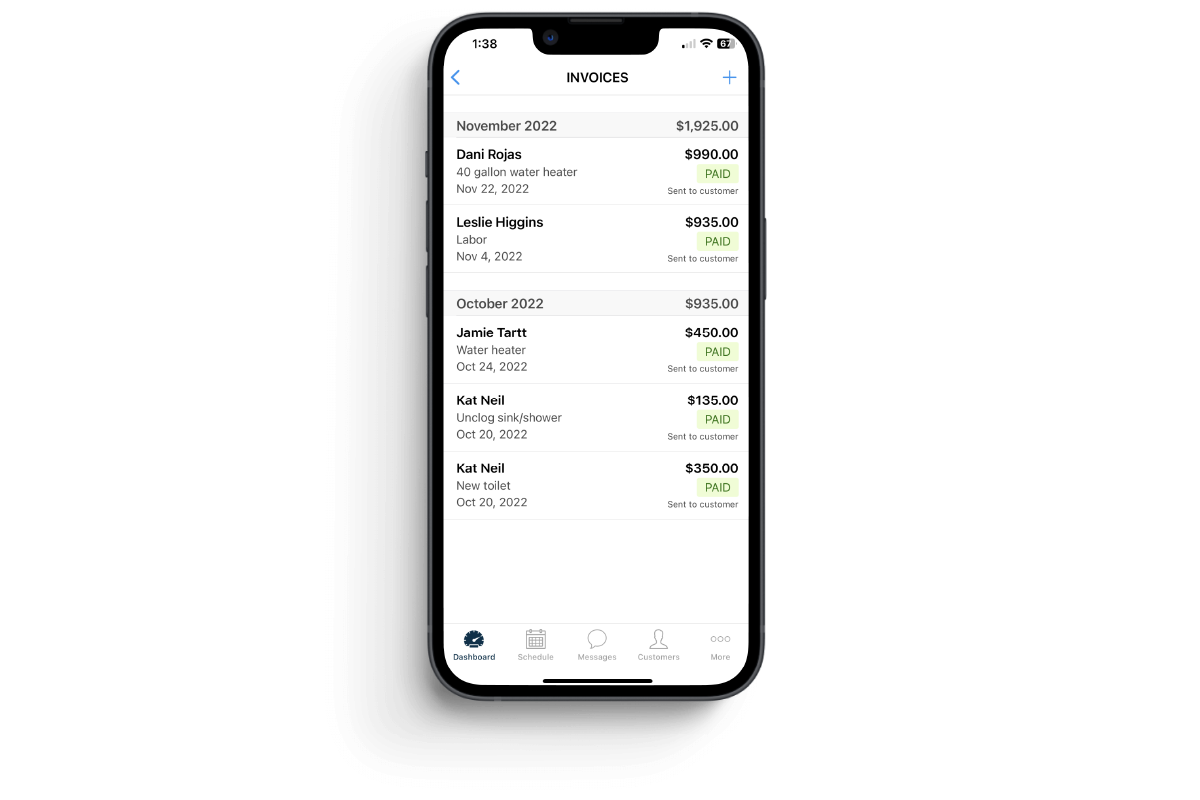
Chimney sweeping is a niche service with growing demand and high earning potential. However, you must first set a solid pricing structure to ensure your business thrives as envisioned. Consider all factors carefully, from pricing as per the type of chimney and cleaning requirements, to factoring in costs for labor, location, and accessibility.
By using the formulae and pricing charts in this guide, you’ll be able to successfully cover your costs while standing out from the competition as a trusted and professional chimney sweep service. You’ll also:
- Understand your area’s average service costs and how your pricing fits within the market.
- Be able to justify your rates and keep your pricing transparent.
- Feel confident to adjust prices based on the value you offer, striking a balance between profitability and customer satisfaction.
- Break free from guesswork and arrive at a structured, competitive pricing point.
Try Housecall Pro a free 14 day trial to build a smart and successful chimney sweep pricing strategy that will maximize your profits.

